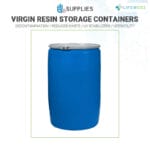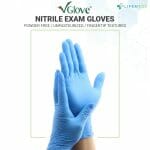What are Workplace PPE Requirements?
Workplace PPE (Personal Protective Equipment) requirements are guidelines and regulations set by safety authorities to ensure that employers provide the necessary protective equipment to safeguard workers from specific hazards in the workplace. These requirements define the types of PPE that must be used based on the nature of the work, the risks involved, and the environmental conditions. PPE is used to protect workers from injuries, exposure to harmful substances, and occupational health risks such as chemicals, airborne particles, physical injuries, and infectious agents.
Workplace PPE requirements are enforced by regulatory bodies such as the Occupational Safety and Health Administration (OSHA) in the United States, and other regional organizations, and typically include specifications for the use of gloves, face masks, respirators, safety glasses, hard hats, protective clothing, hearing protection, and other safety gear.
Why Workplace PPE Requirements Matter
Workplace PPE requirements are critical for ensuring the safety and well-being of employees in environments where hazards cannot be eliminated through engineering controls or administrative measures. Providing workers with the proper PPE helps prevent injuries, illnesses, and fatalities, particularly in industries where exposure to dangerous chemicals, machinery, or biohazards is common. Employers are legally obligated to comply with PPE regulations, ensuring that workers are properly equipped and trained to use the equipment safely. Non-compliance can result in workplace accidents, legal penalties, fines, or lawsuits.
In addition to protecting workers, adherence to PPE requirements fosters a culture of safety in the workplace, boosting employee morale, reducing downtime due to injuries, and improving overall productivity.
Key Regulatory Bodies Governing Workplace PPE Requirements
The primary regulatory bodies that enforce workplace PPE requirements include:
- OSHA (Occupational Safety and Health Administration): OSHA mandates that employers assess their workplace for hazards and provide the appropriate PPE at no cost to employees. OSHA’s standards cover PPE for construction, general industry, healthcare, and other sectors, detailing requirements for head, eye, face, hand, and respiratory protection, among others.
- NIOSH (National Institute for Occupational Safety and Health): NIOSH sets performance standards for respiratory protection, such as N95 masks and other respirators, ensuring that they provide adequate protection from airborne hazards.
- ANSI (American National Standards Institute): ANSI sets voluntary standards for various types of PPE, such as helmets, eyewear, and protective footwear. OSHA frequently references ANSI standards in its regulations to ensure PPE meets specific safety benchmarks.
- European Union (CE Marking): In Europe, PPE must comply with the EU’s PPE Regulation (EU) 2016/425, which sets safety standards for the design, manufacturing, and performance of protective equipment used in the workplace.
Key PPE Requirements for Different Workplace Hazards
Workplace PPE requirements vary based on the type of hazards present in the work environment. Here are the key PPE requirements for different types of workplace hazards:
1. Head Protection
- Requirements: Hard hats or helmets must be provided in environments where there is a risk of falling objects, impacts, or electrical hazards.
- Examples: Construction sites, warehouses, manufacturing plants.
- Regulations: Head protection must meet OSHA standards and comply with ANSI Z89.1, which specifies different helmet types and classes based on their protective features.
2. Eye and Face Protection
- Requirements: Safety glasses, goggles, or face shields must be provided where workers are exposed to flying debris, chemicals, sparks, or harmful light (such as lasers or UV radiation).
- Examples: Laboratories, welding operations, woodworking, healthcare settings (for protection against bodily fluids).
- Regulations: Eye and face protection must comply with OSHA’s standards (29 CFR 1910.133) and ANSI Z87.1, which outlines specific requirements for impact resistance, optical clarity, and splash protection.
3. Hand Protection
- Requirements: Protective gloves must be worn in environments where workers are exposed to chemicals, sharp objects, extreme temperatures, or biological hazards.
- Examples: Chemical processing, healthcare (handling infectious materials), construction (handling rough or sharp materials), food processing.
- Regulations: OSHA requires hand protection to match the specific hazards encountered, including chemical-resistant, cut-resistant, heat-resistant, and puncture-resistant gloves.
4. Respiratory Protection
- Requirements: Respirators, such as N95 masks, half-face, or full-face respirators, must be provided where workers are exposed to harmful dust, fumes, vapors, gases, or biological agents.
- Examples: Healthcare settings (infectious disease control), chemical manufacturing, construction (asbestos, silica dust), mining.
- Regulations: OSHA’s Respiratory Protection Standard (29 CFR 1910.134) mandates that respirators must be NIOSH-approved, and fit testing must be conducted to ensure proper seal and fit for each worker.
5. Hearing Protection
- Requirements: Earplugs or earmuffs must be provided where workers are exposed to high noise levels (above 85 decibels), which could cause hearing loss over time.
- Examples: Construction sites, factories, airports, and heavy machinery operations.
- Regulations: OSHA’s Hearing Conservation Program (29 CFR 1910.95) requires employers to provide hearing protection and conduct regular hearing tests in environments with excessive noise levels.
6. Foot Protection
- Requirements: Safety boots with steel toes, puncture-resistant soles, or slip-resistant materials must be provided in environments where workers are at risk of foot injuries from falling objects, sharp materials, or slippery surfaces.
- Examples: Construction, manufacturing, warehousing, food processing.
- Regulations: Foot protection must comply with OSHA standards and ANSI Z41, which sets requirements for different types of protective footwear.
7. Body Protection
- Requirements: Protective clothing, such as coveralls, flame-resistant clothing, or chemical-resistant suits, must be provided in environments where workers are exposed to hazardous materials, extreme temperatures, or fire risks.
- Examples: Laboratories (chemical exposure), firefighters, oil and gas industry (flame-resistant clothing), construction (cut-resistant clothing).
- Regulations: Body protection must meet OSHA and specific industry standards, such as NFPA 2112 for flame-resistant clothing in the oil and gas industry.
Training and Maintenance Requirements for PPE
Beyond providing PPE, workplace PPE regulations also mandate that employers:
- Conduct Hazard Assessments: Employers must assess their work environment for hazards and determine which types of PPE are necessary based on the risks identified.
- Provide PPE at No Cost: Employers are required to provide all necessary PPE to employees at no cost. This includes any maintenance, repair, or replacement of damaged or worn-out PPE.
- Train Employees: OSHA requires employers to train workers on the proper use, care, and maintenance of PPE. Employees must understand how to don, doff, and adjust their PPE, as well as how to inspect it for damage.
- Ensure Proper Fit: Fit testing, particularly for respiratory protection, must be conducted to ensure that PPE fits each worker properly and provides adequate protection. Workers must also be given PPE that suits their individual needs (e.g., different sizes).
- Inspect and Maintain PPE: Employers are responsible for ensuring that PPE is regularly inspected, maintained, and replaced when necessary. PPE that is damaged, worn out, or no longer provides adequate protection must be removed from service.
The Role of Enterprise Software in Managing Workplace PPE Requirements
Managing workplace PPE requirements can be complex, especially in large organizations or high-risk industries. Enterprise software solutions help streamline this process by automating the tracking, distribution, and compliance of PPE. Key features include:
- Automated Inventory Management: The software tracks the availability of PPE, automatically reorders supplies when stock is low, and ensures that employees have access to the necessary protective gear.
- Compliance Tracking: Enterprise software monitors whether PPE meets OSHA and industry-specific safety standards. It also tracks fit testing schedules, PPE inspections, and employee training records.
- Employee Training Management: Software can automate the scheduling and tracking of PPE training sessions, ensuring that all workers are properly trained on the use and maintenance of their protective gear.
- Reporting and Documentation: The software generates compliance reports that can be used to demonstrate adherence to OSHA and other regulatory standards, simplifying audits and inspections.
Conclusion
Workplace PPE requirements are essential for protecting workers from a wide range of hazards, including chemical exposure, physical injuries, and airborne contaminants. Employers are legally required to assess workplace risks, provide the appropriate PPE, train employees on its use, and ensure proper maintenance of protective gear. Adhering to PPE regulations not only safeguards workers but also helps businesses avoid costly fines and legal liabilities. Enterprise software solutions play a vital role in helping organizations manage their PPE programs efficiently, ensuring compliance with workplace safety regulations and improving overall workplace safety.
« Back to Glossary Index

















